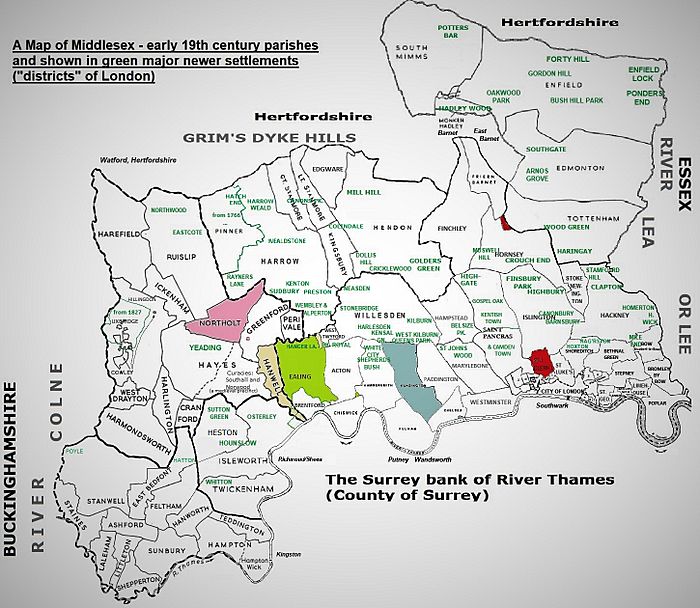Spelthorne Hundred facts for kids
| Spelthorne | |
| Spelthorne Hundred in Middlesex.svg | |
| Geography | |
| Status | hundred |
| 1831 area | 23,386 acres (94.64 km2) |
| History | |
| Created | in late Anglo Saxon England |
Quick facts for kids Demography |
|
|---|---|
| 1831 population | 15,212 |
| 1881 population | 33,460 |
| Subdivisions | |
| Type | Parishes containing manors, churchlands and commons. Henry VIII created the two royal parks in the eastern two parishes - Bushy Park and Hampton Court Park - and set up hunting rights and similar privileges across much of the hundred. By the 19th century all the commons were enclosed and only manor with its lands largely undivided was Hampton Court. |
Spelthorne was an old way of dividing land in the historic county of Middlesex, England. It was called a "hundred." Think of it like a very old district or area.
This hundred included several towns and villages. Some of these places are still well-known today. They include:
- Ashford
- East Bedfont (which had a small area called Hatton)
- Feltham
- Hampton (and later, Hampton Hill grew nearby)
- Hampton Wick
- Hanworth
- Laleham
- Littleton (which now connects to Shepperton)
- A small area called Astleham/Aslam was here, but it was replaced by the Queen Mary Reservoir in the 1930s.
- Shepperton
- Staines
- Stanwell (which included a small area called Stanwell Moor)
- Sunbury (with small areas like Upper Halliford and Charlton)
- Teddington (and part of Fulwell)
Today, about 59% of the original Spelthorne hundred is part of the Spelthorne district in Surrey. The eastern parts of the old hundred are now part of London. These areas became parts of the London Borough of Hounslow and the London Borough of Richmond upon Thames in 1965.
People and Population
This section talks about the number of people living in Spelthorne over time. This is called demography.
In 1801, about 10,288 people lived in the Spelthorne hundred. By 1901, this number had grown a lot, reaching 53,168 people!
The area was split into two main parts for counting people:
- Seven parishes (or local areas) that later became part of Surrey. Their population grew from 5,604 in 1801 to 20,888 in 1901.
- Six parishes that later became part of London. Their population grew even faster, from 4,624 in 1801 to 32,280 in 1901.
This shows how much the area grew and changed over 100 years.
More to Explore
- TW postcode area: This is a modern postal area that covers much of the same land as the old Spelthorne hundred.
- Spelthorne (UK Parliament constituency): This is an area that elects a representative to the UK Parliament. It has existed since 1918.


